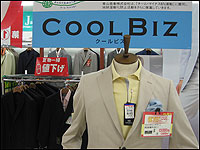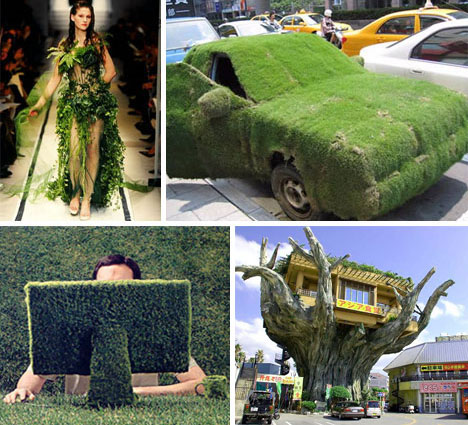
In Japan, an initiative called Cool Biz redefined office fashion and saved office buildings hundreds in cooling expenses by redesigning business attire. The initiative encouraged wearing breathable, lightweight business casual looks that did not involve the constricting, heat trapping tie or heavy suit jacket during the summer months. Not only did it reduce the amount of energy used to keep business folk cool across the country, but designers clamored to the office fashion forefront to make it look good.
The great thing about well done eco-fashion is it can make doing your karmic best for our ecosystems desirable, not a sacrifice. However when the Japanese government mandated certain Cool Biz months for summer office hours- insisting that offices set their air conditioning no lower than 28 degrees C (82 degrees F), dressing lighter just didn't cut it for the sweaty workers tip tap typing away inside.
A valiant effort to cut carbon emissions, but reports of the increase in crankiness and drop in productivity begged for a new balance in cool clothes to cool air. The UN set its AC at 25 degrees instead for its “Cool UN” initiative, which scraps suits and ties for a more casual, less constricting dress code during the month of August. The UN website estimates they will save not only 10 percent of their monthly energy consumption, but 4 billion pounds of steam (thus cutting 300 tons of carbon dioxide in the process), and financial savings of over $100,000.
Now there are Cool Biz initiatives in cities across the globe, challenging offices to loosen the tie and lower the  AC to save energy, reduce emissions, and lower costs. Sounds pretty cool to us. For ladies such as myself, keeping cool is both in the cut and in the fabric. My favorite for breathability and moisture wicking prowess is bamboo, hands and fans down (plus bamboo has antimicrobial properties that keep you smelling fresh). Combine this feel good fabric with a cut that drapes enough to welcome a breeze but is tailored enough to look professional at the office. This summer check out one of my favorite finds from Jonano- the Double Sash Shirt Dress. It has all of the bamboo goodness and the cut is right, plus I find it super slimming with its line of sea shell double buttons... keeping me as cool as a sea cucumber.
AC to save energy, reduce emissions, and lower costs. Sounds pretty cool to us. For ladies such as myself, keeping cool is both in the cut and in the fabric. My favorite for breathability and moisture wicking prowess is bamboo, hands and fans down (plus bamboo has antimicrobial properties that keep you smelling fresh). Combine this feel good fabric with a cut that drapes enough to welcome a breeze but is tailored enough to look professional at the office. This summer check out one of my favorite finds from Jonano- the Double Sash Shirt Dress. It has all of the bamboo goodness and the cut is right, plus I find it super slimming with its line of sea shell double buttons... keeping me as cool as a sea cucumber.



